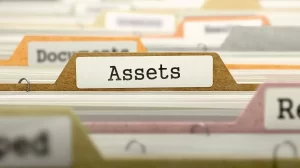
 Recording Assets at Original Value
Recording Assets at Original Value
In accounting, understanding how and when to record assets is crucial for accurate financial reporting. One important concept is the recording of assets at their original value.
What Is Original Value?
Original value refers to the initial cost of acquiring an asset. This includes the purchase price as well as any additional expenses necessary to prepare the asset for use, such as shipping, installation, and taxes. Recording assets at original value establishes a baseline for future accounting and ensures consistency over time.
When Are Assets Recorded at Original Value?
Assets are recorded at original value at the time of acquisition. Whether it’s a piece of machinery, a building, or an intangible asset like a patent, the value recorded is the price paid at the time of purchase. This principle is fundamental in accounting and ensures that financial statements reflect the cost incurred by the business.
Why Is Recording at Original Value Important?
1.Consistency: Recording assets at their original value provides a stable foundation for financial reporting, allowing for more straightforward comparisons over time.
2. Depreciation: While the original value remains unchanged, it plays a critical role in calculating depreciation. Depreciation allocates the cost of an asset over its useful life, impacting both the income statement and balance sheet.
3. Transparency: By using original value, businesses can present a clear picture of their asset base, which is essential for investors, creditors, and stakeholders.
4. Gain or Loss Recognition: When an asset is sold, its original value helps determine any gain or loss on the transaction, providing insights into the financial health of the business.
Considerations and Exceptions
While the original value is typically constant, there are instances where adjustments may occur. For example, if an asset is impaired or if it undergoes revaluation under specific accounting standards, its value may be adjusted. However, these cases are exceptions rather than the norm.
To visit: https://www.mca.gov.in
FAQs
1.What does “original value” mean?
Ans: Original value is the initial purchase price of an asset, including any costs necessary to get it ready for use.
2. When are assets recorded at original value?
Ans: Assets are recorded at original value when they are first acquired, regardless of their current market value.
3. Why is original value important?
Ans: It provides a clear basis for accounting and financial reporting, ensuring consistency over time.
4. What types of assets are recorded at original value?
Ans: Both tangible assets (like machinery and buildings) and intangible assets (like patents) are recorded at original value.
5. How does depreciation affect original value?
Ans: Depreciation reduces the asset’s book value over time but does not change the original value recorded.
6. Can original value change?
Ans: No, the original value remains constant, but adjustments may be made for impairment or revaluation in some cases.
7. What costs are included in the original value?
Ans: Costs such as purchase price, shipping, installation, and taxes incurred during acquisition are included.
8. How does original value relate to financial statements?
Ans: Original value impacts the balance sheet and helps determine the asset’s contribution to net income through depreciation.
9. What happens to original value when an asset is sold?
Ans: Upon sale, the original value is compared to the selling price to determine any gain or loss on the sale.
10. Are there any exceptions to recording at original value?
Ans: Yes, under certain accounting standards, some assets may be revalued based on fair market value instead of original value.

